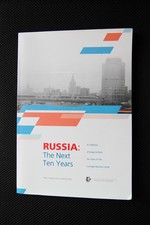Word frequency of Ukraine, Crimea, DNR/LNR and Novorossiya on 1tv.ru
The data included in this post were prepared for publication on the online journal Ukraine-Analysen 182 (http://www.laender-analysen.de/ukraine/pdf/UkraineAnalysen182.pdf).
This is a quick update to the data presented in a previous post published on this blog in November 2015 on “ Word frequency of ‘Ukraine’, ‘Crimea’, and ‘Syria’ on Russia’s First Channel".
The dataset has been created by extracting textual contents of each news item published on Pervy Kanal’s website between the beginning of Putin’s presidency on 7 May 2012 and 1 March 2017 (115.
Russian media: more Trump than Putin
Recently, Scan Interfax revealed that in the month of January 2017, for the first time since 2011, Vladimir Putin has not been the most frequently mentioned individual on Russian media: Donald Trump was. The news quickly made the rounds on American media (e.g. on Washington Post, Newsweek, CNN, and others).
According to an article by Konstantin von Eggert published by Deutsche Welle, on 15 February Russian state-owned media of the VGTRK group were instructed to stop talking about Trump so much.
Russia and pensions in post-Soviet de facto states
This post outlines basic information about pensions in Abkhazia, South Ossetia and Transnistria, and the role of Russia in financing the pensions of residents in these territories. It is based on data and information available online, and includes references to relevant legislations and international treaties. All information comes either directly from official sources, or from news agencies quoting official sources.
Word frequency of ‘Ukraine’, ‘Crimea’, and ‘Syria’ on Russia’s First Channel
Just more than a month has passed since Russia started its military intervention in Syria. There has been a lot of talking about the motivations behind the Kremlin’s decision to take an active military role in the Middle East, and a number of competing explanations have been proposed. However, one element that has been frequently quoted is the Kremlin’s desire to shift attention in Russia’s media from Ukraine to something else, while maintaining the focus on foreign affairs rather than domestic issues.
Journals focused on post-Soviet, post-Communist and Eastern European affairs
It requires a big effort to stay up-to-date with academic publications in one’s sphere of interest. I put together this post to make it easier to have at least a quick overview of what has been published recently in English-language peer-reviewed journals for those with an interest in post-Soviet, post-Communist and Eastern European affairs.
First, there’s a list of the journals I think are most relevant for scholars focusing on this region, in no particular order (if you think I am missing something important, please let me know).
Aliyev: more and more ‘double standards’
At the latest ASN conference in New York I have been talking with Sofie Bedford about the rhetoric of ‘double standards’ in Azerbaijan and elsewhere. The conversation prompted a vary basic research question: “is it true that Azerbaijan’s president has been using more and more the rhetoric of ‘double standards’?”
Since it is exactly the kind of straightforward question that can be easily approached with a tool I have been working on recently that simplifies quantitative content analysis of textual materials available online, I gave it a spin… and here are the results.
1989 language laws in Moldova
The language laws introduced in Moldova in 1989 are frequently mentioned in publications dealing with inter-ethnic relations or language issues in the country or with language policies in the post-Soviet space more in general (a short reference list is included at the end of the post). Understandably, none of them presents in detail each of these laws. However, for my own research, I decided to go through some of them.
Russia 2014 as imagined in 2004
In 2004, the Carnegie Moscow Center published a book titled “Russia: the next ten years” (Kuchins and Trenin, 2004). In the introduction, Kuchins makes clear that the aim of the publication is not “to predict” what would happen in the following ten years but rather “to elucidate the context for critical choices for Russian policymakers and the Russian people” (p. 10). However, many of the contributors tried to picture the Russia of 2014, often presenting both a more optimistic and a more pessimistic scenario.
Social media in post-Soviet de facto states
Here you find Facebook interest lists and Twitter lists including the pages and public profiles of institutions, news outlets, NGOs as well as public figures related to post-Soviet de facto states.
Any Facebook or Twitter user can subscribe to these lists and follow the online activities that appear on these social media and relate to either of the post-Soviet de faco states.
Some of these lists gather a considerable number of sources (e.
Post-soviet de facto states official reactions to events in Crimea
Representatives of authorities in all four post-Soviet de facto states issued statements in favour of Crimea’s referendum as an expression of the right to self-determination and declared their hope that this will contribute to a shift in international law. South Ossetia and Transnistria explicitly supported also Crimea’s annexation to the Russian Federation, while Nagorno Karabakh and Abkhazia refrained from doing so, at least for what concerns official statements issued so far.
